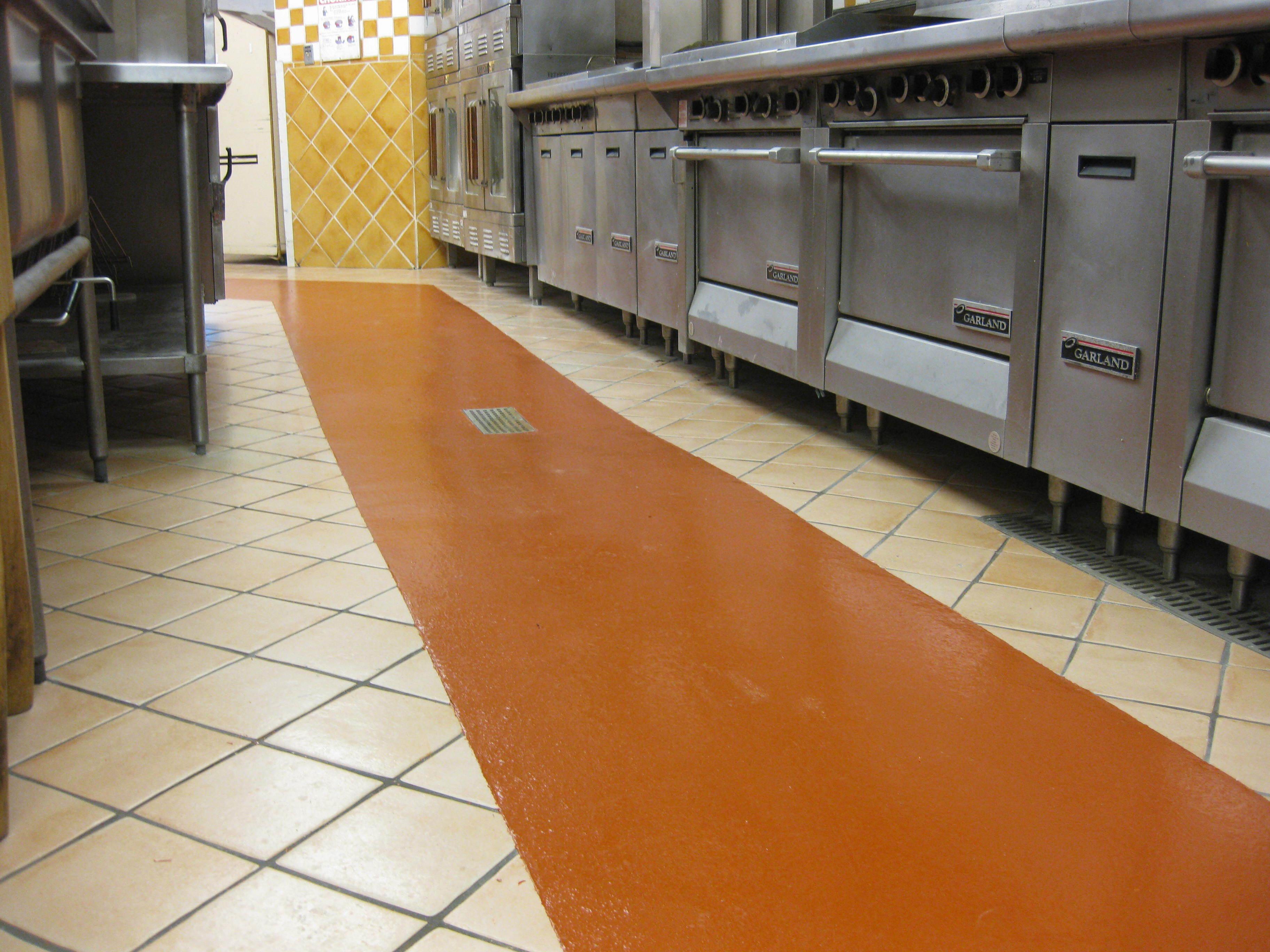The Problem
In commercial kitchens, safety is paramount. Slippery floors, often caused by spilled liquids, grease, or food debris, can lead to serious slip and fall accidents. This post covers how the Culinary Institute of America addressed this issue by replacing their slippery quarry tile floors with seamless, anti-slip floor coating. The key product used for this transformation is MORTARTHANE™ SL, a urethane cement floor resurfacer that enhances safety and durability.
Step-by-Step Guide to Installing an Anti-Slip Walkway
- Assessing the Need for Safety
The first step in this renovation was identifying the risk areas. The existing quarry tile floor was too slippery, especially in high-traffic kitchen zones. - Choosing the Right Flooring System
MORTARTHANE™ SL, a urethane cement floor resurfacer, was selected for its excellent non-slip properties. It also provides resistance to thermal shock, which is critical in commercial kitchens with temperature fluctuations. - Surface Preparation
Before applying the new floor coating, the old tiles were cleaned, and any damaged areas were repaired. Proper surface preparation ensures optimal adhesion for the new coating. - Applying the Anti-Slip Coating
MORTARTHANE™ SL was applied to create a smooth yet slip-resistant surface. This coating not only enhances safety but also makes cleaning easier by providing a seamless finish. - Adding a Walkway
To further enhance safety, a designated walkway was created across the kitchen floor. This specific area offers additional traction to prevent slips and falls where kitchen staff frequently walk.
Why Choose MORTARTHANE™ SL for Kitchen Floors?
- Slip Resistance: Provides superior anti-slip performance, reducing the risk of accidents.
- Thermal Shock Resistance: Ideal for kitchens where temperatures fluctuate rapidly.
- Easy to Clean: The seamless surface makes maintenance simple and prevents the buildup of dirt and grease.

Safe and Sound Kitchens
With the installation of MORTARTHANE™ SL, the Culinary Institute of America has not only improved floor safety but also created a durable and easy-to-maintain surface. This upgrade provides peace of mind for both staff and students, ensuring that safety in the kitchen doesn’t have to be compromised.